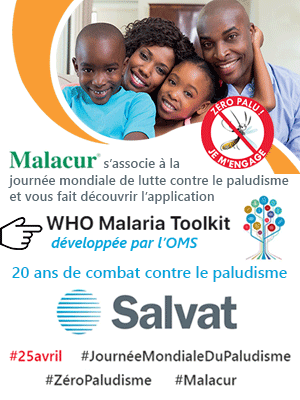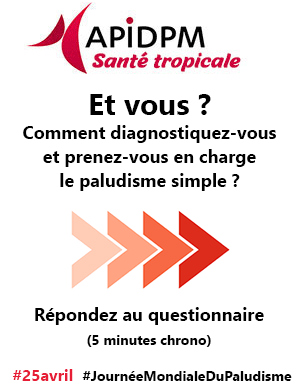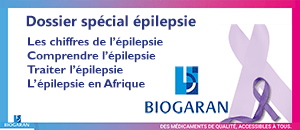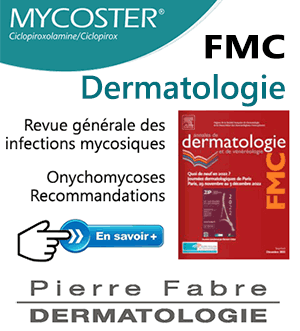← retour Santé tropicale
Accès aux sites pays ![]()
![]() BENIN
BENIN![]() BURKINA FASO
BURKINA FASO![]() CAMEROUN
CAMEROUN![]() CENTRAFRIQUE
CENTRAFRIQUE![]() CONGO
CONGO![]() COTE D'IVOIRE
COTE D'IVOIRE![]() GABON
GABON
![]() GUINEE
GUINEE![]() MADAGASCAR
MADAGASCAR![]() MALI
MALI![]() R.D. CONGO
R.D. CONGO![]() SENEGAL
SENEGAL![]() TOGO
TOGO
← retour Santé tropicale
Accès aux sites pays ![]()
![]() BENIN
BENIN![]() BURKINA FASO
BURKINA FASO![]() CAMEROUN
CAMEROUN![]() CENTRAFRIQUE
CENTRAFRIQUE![]() CONGO
CONGO![]() COTE D'IVOIRE
COTE D'IVOIRE![]() GABON
GABON
![]() GUINEE
GUINEE![]() MADAGASCAR
MADAGASCAR![]() MALI
MALI![]() R.D. CONGO
R.D. CONGO![]() SENEGAL
SENEGAL![]() TOGO
TOGO

Publié dans Médecine d'Afrique Noire 5805 - Mai 2011 - pages 247-252
 Epidémiologie et clinique des cancers du pharynx à Abidjan
Epidémiologie et clinique des cancers du pharynx à AbidjanAuteurs : Tanon-Anoh M.J., Badou K.E., Yoda M., Kouassi-N’Djeundo J., Koffi-Aka V., Ette-Akre E., Kouassi B. - Côte d'Ivoire
Objectif : Décrire les aspects épidémiologiques, histopathologiques et cliniques des cancers de la portion digestive du pharynx, en dehors de ceux localisés au niveau du cavum.
Patients et méthodes : Il s’agissait d’une étude rétrospective et descriptive. Elle incluait 48 patients, reçus en ORL dans les CHU d’Abidjan (Côte d’Ivoire), pour un cancer de l’oropharynx ou de l’hypopharynx histologiquement confirmé, durant la période de janvier 1998 à décembre 2007.
Résultats : Ces tumeurs représentaient 21,02% des cancers ORL. L’âge moyen des patients atteints était de 50,75 ans, avec des extrêmes de 20 et 69 ans. Il existait une prédominance masculine (sex-ratio : 2,2). Les facteurs de risque identifiés étaient surtout l’alcool et/ou le tabac (43,75%). L’odynophagie était le signe d’appel le plus fréquent (58,33%), suivi par la dysphagie (43,75%), puis par la dysphonie et l’amaigrissement, avec respectivement 27,08% des cas. Le délai du diagnostic variait de 13 à 64 jours (moyenne : 35,5 jours). La tumeur était de siège oro-pharyngé (64,5%) ou hypo-pharyngé (6,25%) ou pharyngo-laryngé (18,75%). Le carcinome épidermoïde était le type histologique prédominant (85%). Les patients étaient majoritairement à un stade III (29,73%), ou IV (59,46%), au moment du diagnostic. La survie brute à 5 ans était de 11,54%.
Conclusion : Les cancers du pharynx connaissent une augmentation de fréquence ces dernières années à Abidjan. Si les caractéristiques épidémiologiques et cliniques sont conformes aux données de la littérature, le rôle de certains facteurs de survenue autres que le tabac et l’alcool, reste à déterminer, afin de mieux orienter la prévention de ces cancers. Le diagnostic est le plus souvent tardif, bien que les signes d’appel soient précoces.
Objective: To describe the epidemiologic, clinical and histopathologic aspects of cancers of the digestive portion of the pharynxes, apart from those localised on the level of the cavum.
Patients and methods: It was a retrospective and descriptive study in which were included 48 patients. There were received in the ENT’s service of the Abidjan’s UTH (Ivory Coast) for a oropharyngeal or hypopharyngeal cancer, histologically confirmed, during the period from January 1998 to December 2007.
Results: These tumours accounted for 21.02% of ENT cancers. The average age of the patients was 50.75 years (extremes: 20 and 69 years). There was a male prevalence (sex-ratio: 2.2). The identified risks factors were especially alcohol and/or tobacco (43.75%). Painful dysphagia was the most frequent key symptom (58.33%) followed by dysphagia (43.75%) then hoarseness and weight loss with respectively 27.08% of the cases. The diagnosis delay varied from 13 to 64 days (average: 35.5 days). The seat of the tumour was at the oropharynx (64.5%) or hypopharynx (6.25%) or pharynx and larynx (18.75%). Squamous cell carcinoma was the prevalent histological type (85%). The patients were at a stage III (29.73%) or IV (59.46%) at diagnosis. The five-years survival rate was 11,54%.
Conclusion: Pharyngeal cancers know an increase in frequency these last years in Abidjan. If the epidemiologic and clinical characteristics are in conformity with the data of the literature, the role of certain factors of which has occurred, others that the tobacco and alcohol, remain to be determined in order to target the prevention of these cancers. The diagnosis is generally late although the symptoms are early.
Cet article est actuellement coté ![]() (2,7 étoiles) par les abonnés de Médecine d'Afrique Noire.
(2,7 étoiles) par les abonnés de Médecine d'Afrique Noire.
Il a été consulté 3237 fois, téléchargé 153 fois et évalué 3 fois.
1 commentaire a été posté à propos de cet article
Restez informés : recevez, chaque mercredi, la lettre d'informations de Santé tropicale. Inscriptions
Ce contenu gratuit vous est destiné :








![]() Adresse
Adresse
![]() Téléphone
Téléphone
![]() Contactez-nous
Contactez-nous
Actualités
Articles médicaux